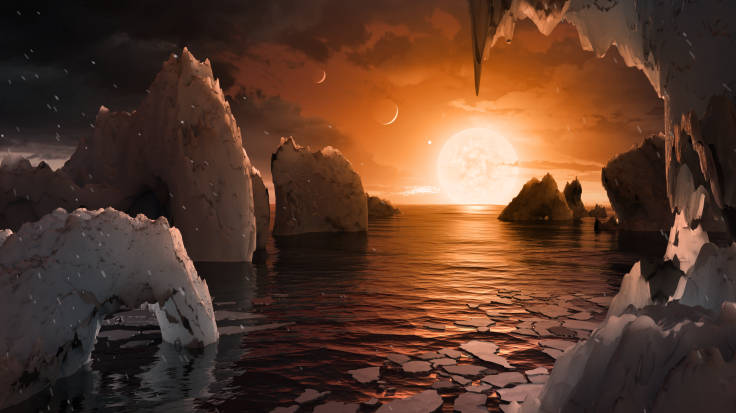Aliens On Other Planets: Look For These 4 Signs Of Extraterrestrial Life Forms, Scientists Say

Searching for life on other planets is a complicated science. It’s not like a NASA probe is going to take a photo of another planet’s surface and see aliens walking around. We have to look for more subtle details, like the marks extraterrestrial organisms would have left behind. So what do scientists look for when they investigate other planets?
Maybe because of this bias we’re completely missing a life form right under our galactic noses that breathes hydrogen sulfide, for example — or doesn’t breathe at all. But we know what conditions have to exist on Earth for all the creatures here to survive, so we look for those things on other planets. They include oxygen for the aliens to breathe, water to sustain them and a Goldilocks-type temperature that is not too hot and not too cold.
That’s where the idea of a habitable zone comes in: It’s the area around a star where orbiting Earth-like planets are at the right distance for their surfaces to have liquid water. Any closer and the water would boil into gas; any farther and it would freeze into ice.
“Liquid water is essential to all life on Earth, and so the definition of a habitable zone is based on the hypothesis that extraterrestrial life would share this requirement,” Encyclopaedia Britannica points out.
It might not just be arrogance to assume alien life would need the same conditions to thrive as we do. Famous astrophysicist Neil deGrasse Tyson has explained that three of the most common elements in the universe — carbon, oxygen and hydrogen — are essential for life on Earth.
“Aliens need not look like us to resemble us in more fundamental ways,” he says. “You can bet that if life is found on another planet, it will be made of a similar mix of elements. Conversely, if life on Earth were composed primarily of, for example, molybdenum, bismuth, and plutonium, then we would have excellent reason to suspect that we were something special in the universe.”
Volcanoes
If a planet is not in a habitable zone, volcanoes could be crucial. Researchers from Cornell University recently suggested that volcanic eruption could warm the planet enough to support life.
Fossils
Life leaves behind evidence of its existence. In the case of tiny fossils recently discovered in Canada, they are likely what’s left of bacteria that lived in hydrothermal vents underwater in the early days of Earth, possibly more than 4 billion years ago. Some of the earliest, most primitive life on Earth may have lived in those vents, and because they share features with environmental conditions on Mars in the past, the fossil discovery may point scientists in a fruitful direction as they search for evidence of life on the Red Planet.
A message
The SETI Institute listens and looks for signals from intelligent extraterrestrial life forms. If life on other planets at a reasonable distance from Earth only consists of microorganisms, chances are they will not be sending us messages. But in case there are “technically sophisticated beings” out there, SETI is on the lookout for radio and light evidence of them.
See also:
Evolution in Action: Fish Jumping Onto Land Like Our Distant Ancestors
Ancient Cranium Tells Us How Humans and Neanderthals Evolved
© Copyright IBTimes 2024. All rights reserved.





















